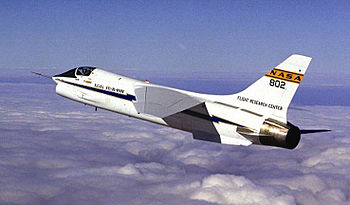C*: Yaw
Mon 01 April 2019
This post is about yaw control. This is also the post for which I did not find many references.
Remember the yaw is the axis controlled by the rudder. The rudder acts as any foil, providing a force dependant of its angle of attack. This angle of attack is function of side slip angle (noted \(\beta\)) and the rudder's deflection.
Basically, the rudder command an effort on the stabilizer, inducing a rotation around the yaw axis. Note that the stabilizer also induce a force on this axis. The stabilizer's force tend reduce sideway slip. This momentum grows with speed.
On the way
The aircraft velocity is high, there is little risks to stall. The goal is to avoid extra drag due to going sideways. When the pilot's rudder is at neutral position, the aircraft must go straight ahead and the pilot should command the sideslip angle. When performing turns, pilot's input to neutral must result coordinated turns (rudder not in neutral position). Yaw control is also used for stabilisation purpose (e.g. yaw damping).
At low altitude
When really close to the ground, roll cannot be used to control airplane's trajectory. The bank angle is limited due to both the ground clearance and the low speed (when near stall, having wings not leveled is not wise). Thus, the rudder is used to control direction.
Normal law
Normal law is used in flight in normal condition. The A320 and the A380 does not act the same way.
- the A320 adds pilots' input and flight-by-wire (FBW) orders [2]. The FBW system add orders so that with neutral pilot input, it handles yaw damping and coordinates turns
- on the A380, the pilot's input commands sideslip angle.
Ground law
On the A380, the pilot control the yaw rate [1]. I found no evidence for the A320, thus I assume the FBW system adds no input.
Direct law
| [1] | source: A380 Briefing For Pilots, march 2006 |
| [2] | source: AAIB Bulletin: 8/2008 incident report |
Category: aviation Tagged: C star Flight dynamics yaw

